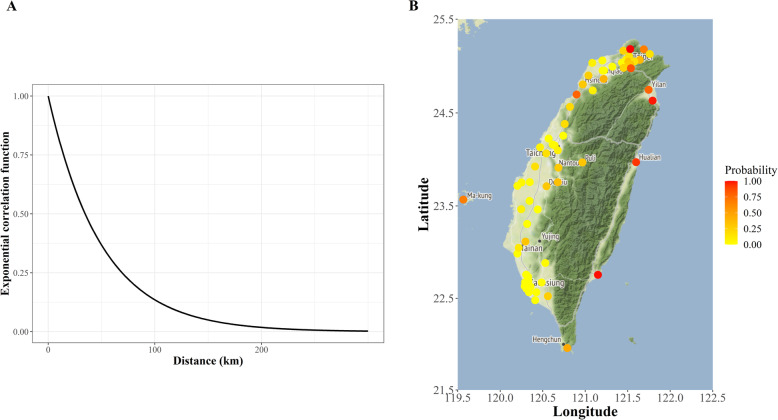Fig. 3.
Estimated spatial correlations and predicted risk-exceedance probabilities (P [exp(Y) > 1]) of cardiovascular diseases in Taiwan. a Estimated spatial correlations of exposure to air pollution and consequent pollution effects on cardiovascular diseases. Based on the estimated spatial parameters σ = 1.28 and ϕ = 0.44, when the distance between the proxies for two individuals (i.e., two air quality monitoring stations assigned to them) is more than 100 km, the corresponding relative spatial correlations with the hazard of CVDs between these two individuals reduce to almost zero; this means the spatial variability that cannot be explained by the covariates in the model is almost zero when two stations are located more than 100 km apart from each other. b Predicted risk-exceedance probabilities (P [exp(Y) > 1]) of cardiovascular diseases for individual geographic areas in Taiwan. This plot shows the posterior probability that the covariate-adjusted relative risk of CVDs is larger than 1 (P [exp(Y) > 1]), which maps the likelihood of excessive CVD risks as the “CVD risk-exceedance probability” to demonstrate the risk level of CVDs for areas in Taiwan. Specifically, for the areas with a color spot close to red that indicates the likelihood of having CVDs (i.e., covariate-adjusted relative risk > 1) is close to 100%, they could be classified as the area with a higher CVD risk. In contrast, for those with a color spot close to yellow that implies the likelihood of having CVDs > 1 is close to 0%, they could be considered as the area with a lower CVD risk

